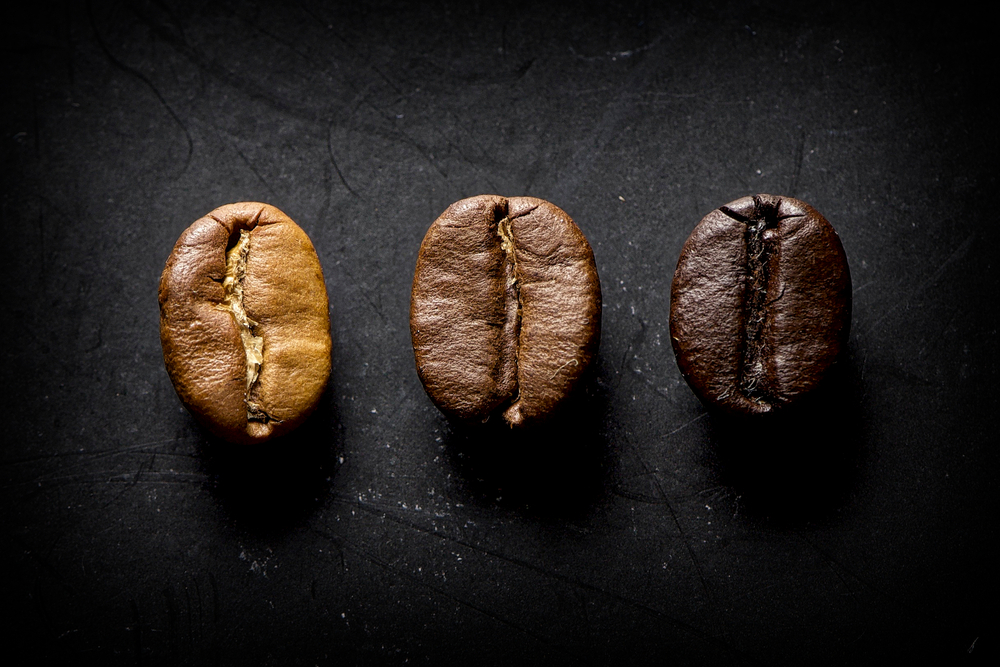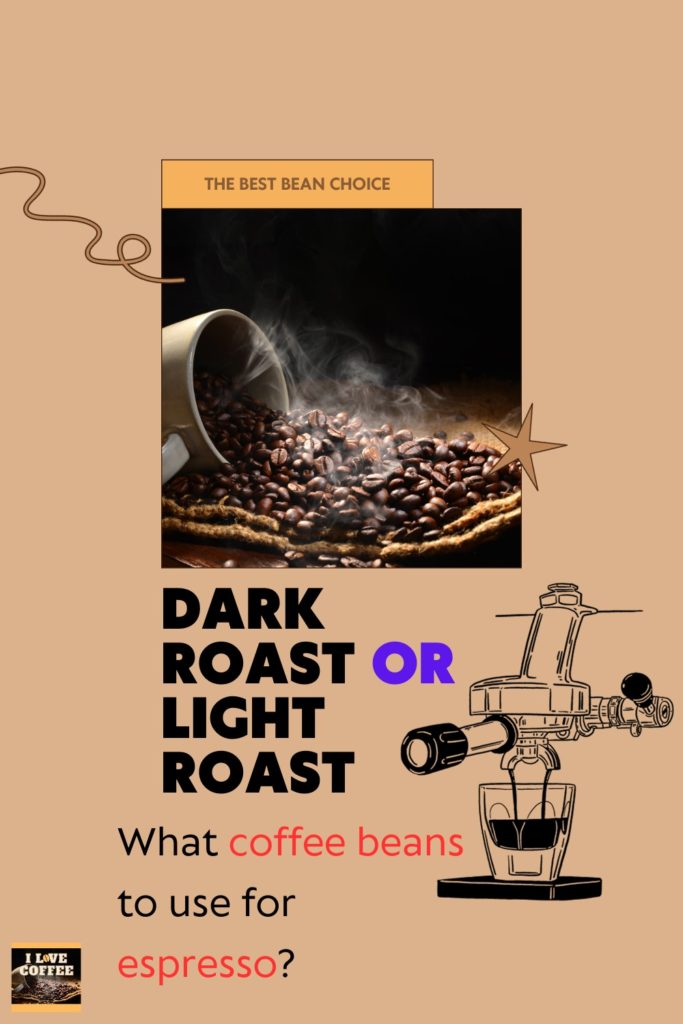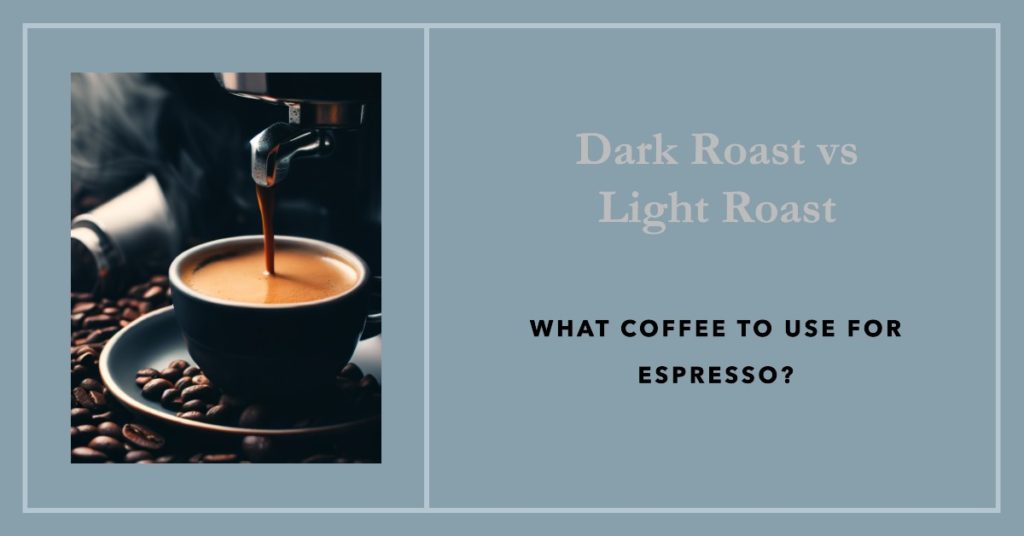If you’re a coffee lover, you know that the perfect espresso starts with the right beans. But when it comes to choosing between dark roast and light roast, things can get a little confusing. So, what coffee to use for espresso? While dark roast beans are often associated with bold, strong flavors, light roast beans are known for their bright, fruity notes.
So which one is better for your espresso? The truth is, it depends on your personal taste preferences and the type of espresso you’re looking to create. In this article, we’ll take a closer look at the differences between dark and light roast beans and what you can expect from each when it comes to making the perfect espresso. And at the end, I will give you a list of the 13 best espresso brands. So sit back, grab a cup of your favorite brew, and let’s dive in!
Oh yes, some of the links are affiliate links. Meaning if you click on a link and as a result, you buy from them, I may get a little commission. However, this will not make your products any more expensive. Read more in my privacy policy.
In this blog post we will look at the following:
The difference between dark and light roast

Before we dive into which roast is best for espresso, let’s first take a look at the differences between dark and light roast beans. The main difference between the two is the amount of time the beans are roasted for.
Dark roast beans are roasted for a longer period of time, resulting in a darker color and a stronger, more robust flavor. Light roast beans, on the other hand, are roasted for a shorter period of time, resulting in a lighter color and a more delicate flavor profile.
In addition to the roasting time, the flavor profile of each roast can also be influenced by the origin of the beans. For example, beans from South America tend to have a nutty, chocolatey flavor, while beans from Africa can have a more fruity, floral flavor profile. It’s important to consider both the roast level and the origin of the beans when choosing which coffee to use for your espresso.
Factors to consider when choosing a roast for espresso
When it comes to choosing a roast for your espresso, there are a few factors to consider. First, think about your personal taste preferences. Do you prefer a bold, strong flavor or a more delicate, nuanced flavor? This will help guide you towards either a dark or light roast.
Another factor to consider is the type of espresso you’re looking to create. If you’re making a traditional Italian-style espresso, a darker roast may be more appropriate, as it will hold up better against the milk and sugar typically added to this type of espresso.
However, if you’re looking to create a single-origin espresso that highlights the unique flavor profile of the beans, a lighter roast may be a better choice.
There are many factors to consider for what coffee to use. There are many popular coffee flavors in addition to several different beans, and roast levels. I will go on now and talk about the different roast levels.
Dark roast espresso – flavor profile and characteristics

Dark roast espresso beans are roasted for a longer period of time, resulting in a darker color and a more robust flavor profile. The longer roasting time also causes the beans to lose some of their acidity, resulting in a smoother, less acidic cup of coffee. Dark roast espresso is often used in traditional Italian-style espresso drinks, as it can hold up well against the milk and sugar typically added to these drinks.
In addition to its strong flavor profile, dark roast espresso also has a few other characteristics that make it a popular choice for espresso lovers. For one, it contains less caffeine than lighter roasts, which can be beneficial for those who are sensitive to caffeine. Dark roast espresso also has a longer shelf life than lighter roasts, as the longer roasting time helps to preserve the beans.
Light roast espresso – flavor profile and characteristics
Light roast espresso beans are roasted for a shorter period of time, resulting in a lighter color and a more delicate flavor profile. Light roast espresso is often used in single-origin espresso drinks, as it allows the unique flavors of the beans to shine through. This type of espresso is also great for those who prefer a more nuanced, less robust flavor.
One characteristic of light roast espresso is its higher acidity, which can give it a bright, fruity flavor profile. This type of espresso is also typically higher in caffeine than dark roast espresso, which can be a benefit for those who need a little extra boost in the morning. However, light roast beans do have a shorter shelf life than dark roast beans, as they are more prone to oxidation.
What coffee to use for espresso machine?
When it comes to choosing the best roast for your espresso machine, it’s important to consider both the type of machine you have and your personal taste preferences. If you have a traditional Italian-style espresso machine and prefer a strong, robust flavor, a dark roast may be the best choice. However, if you have a more modern espresso machine that allows you to control the brewing temperature and pressure, you may be able to get away with using a lighter roast.
Ultimately, the best way to determine which roast is best for your espresso machine is to experiment with different types of coffee and see which one produces the best results. Try brewing a shot of espresso with both a dark roast and a light roast and compare the flavor profiles to see which one you prefer.
Looking for a new espresso machine. Well, read this Breville Touch Espresso Machine Review first.
Tips for brewing the perfect espresso with dark and light roast
No matter which roast you choose, there are a few tips you can follow to ensure you’re brewing the perfect espresso every time. First, make sure you’re using fresh, high-quality coffee beans. Stale beans can result in a dull, lifeless cup of coffee.
Next, make sure you’re using the right amount of coffee and water. A typical shot of espresso should use about 7 grams of coffee and 1 ounce of water. If you’re using a darker roast, you may need to use a slightly larger dose of coffee to ensure the flavor is strong enough. Make sure to grind the beans fresh every time.
Finally, pay attention to the brewing temperature and pressure. The ideal brewing temperature for espresso is around 200 degrees Fahrenheit, and the ideal brewing pressure is around 9 bars. If your machine allows you to adjust these settings, play around with them until you find the sweet spot that produces the best flavor.
The debate on caffeine content in dark vs. light roast
One of the most hotly debated topics when it comes to coffee is the caffeine content in dark vs. light roast beans. Many people assume that dark roast coffee contains less caffeine than light roast coffee, but this is actually a common misconception. In reality, the caffeine content in coffee is determined by the type of beans and the brewing method, not the roast level.
That being said, there is some evidence to suggest that dark roast coffee may be easier on the stomach than lighter roasts. This is because the longer roasting time causes the beans to produce a compound called N-methylpyridinium, which has been shown to reduce stomach acid production.
You asked, “what coffee to use for espresso?” Here are the 13 best espresso brands
What is more natural than to give you a list of the best espresso brands at this point? So, here they are:
- Lavazza Super Crema Espresso Whole Bean Coffee. This is a creamy and smooth blend of Arabica and Robusta beans from Brazil, Colombia, Indonesia, and Vietnam. It has a rich aroma and a balanced flavor with notes of honey, almonds, and dried fruit.
- Stone Street Coffee Company Knee Buckling Espresso. This is a dark roast blend of 100% Arabica beans from South America, Africa, and Indonesia. It has a strong and fragrant aroma and a full-bodied flavor with hints of cocoa, caramel, and molasses.
- Starbucks Espresso Roast Whole Bean Coffee. This is a dark roast blend of high-quality Arabica beans from Latin America and Asia-Pacific. It has a bold and intense aroma and a rich and caramelized flavor with a sweet finish.
- illy Espresso Classico Medium Roast. This is a medium roast blend of 100% Arabica beans from nine different origins. It has a smooth and velvety aroma and a balanced and elegant flavor with notes of chocolate, toast, caramel, and flowers.
- Lifeboost Coffee Dark Roast Whole Bean Coffee. This is a dark roast blend of 100% organic Arabica beans from Nicaragua. It has a low acidity and a smooth and robust aroma and flavor with notes of chocolate, vanilla, and nuts.
- Lavazza Gran Espresso Whole Bean Coffee Blend. This is another dark roast blend from Lavazza, featuring Arabica and Robusta beans from Brazil, India, Colombia, and Indonesia. It has a rich and spicy aroma and a full-bodied and complex flavor with notes of dark chocolate, pepper, and cloves.
- Kimbo Espresso Napoletano Whole Bean Coffee. This is a medium-dark roast blend of Arabica and Robusta beans from Brazil, Colombia, Ethiopia, India, Vietnam, and Indonesia. It has a strong and fragrant aroma and a smooth and creamy flavor with notes of roasted nuts, toast, and cocoa.
- Caffè Borbone Respresso Miscela Blu. This is a dark roast blend of Arabica and Robusta beans from Brazil, Central America, Africa, and Asia. It has a full-bodied and intense aroma and flavor with notes of wood, smoke, and spice.
- Caffè Passalacqua Mehari. This is a medium-dark roast blend of Arabica beans from Ethiopia, Guatemala, Brazil, Colombia, Costa Rica, Honduras, Mexico, Peru, El Salvador, Nicaragua, Panama. It has a floral and fruity aroma and a sweet and delicate flavor with notes of citrus, honey, caramel, and vanilla.
- Stumptown Hair Bender. This is a medium-dark roast blend of Arabica beans from Latin America, Africa, Indonesia. It has a complex and bright aroma and flavor with notes of citrus, cherry, toffee, fudge.
Conclusion – what coffee to use for espresso?
When it comes to choosing between dark and light roast coffee for your espresso, there is no one-size-fits-all answer. Ultimately, for the question: what coffee to use for espresso? it comes down to your personal taste preferences and the type of espresso you’re looking to create.
If you prefer a strong, robust flavor and are making a traditional Italian-style espresso, a dark roast may be the best choice. However, if you prefer a more delicate, nuanced flavor and are making a single-origin espresso, a light roast may be a better option.
Regardless of which roast you choose, remember that the key to brewing the perfect espresso is using high-quality beans, paying attention to the brewing temperature and pressure, and experimenting until you find the perfect brewing ratio. With a little practice and patience, you’ll be able to create a delicious cup of espresso that perfectly suits your taste preferences.
FAQ
Q: Can regular coffee be used for espresso?
A: Regular coffee is not typically suitable for espresso preparation. Espresso requires a specific grind size and brewing method to achieve its characteristic flavor and texture. Regular coffee is usually ground coarser and brewed differently, making it unsuitable for producing a true espresso shot.
Q: Is espresso just really strong coffee?
A: Espresso is not merely strong coffee; it is a unique brewing method that involves forcing hot water through finely ground coffee under high pressure. This process results in a concentrated, rich, and full-bodied beverage with distinct characteristics that set it apart from regular coffee.
Q: What are the three beans in espresso?
A: The term “espresso beans” does not refer to a specific type of coffee bean. Espresso can be made using a variety of coffee beans, including single-origin beans or blends. The choice of beans depends on personal preferences and desired flavor profiles.
Q: Are certain beans better for espresso?
A: While there is no definitive answer to what beans are best for espresso, certain characteristics are generally desirable. Beans with a medium to dark roast level are commonly preferred as they can withstand the intense brewing process and develop rich flavors. Additionally, a blend of beans from different origins often creates a balanced and complex espresso flavor.
Q: Can you make espresso beans like regular coffee?
A: The term “espresso beans” is often used to describe coffee beans that are specifically selected or roasted for espresso brewing. However, any coffee beans can be used for espresso as long as they are freshly roasted and ground to the appropriate fineness. The key is in the brewing process, where high-pressure extraction is used to produce the concentrated espresso shot.

